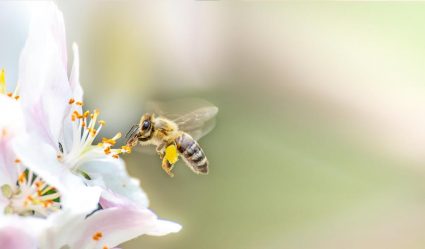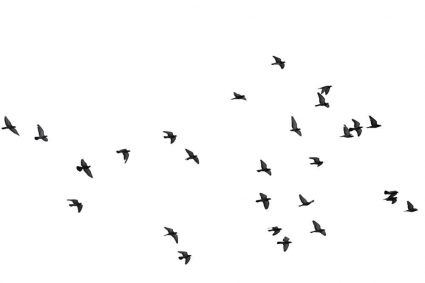
Raccoons may be cute, but they can also be a nuisance, causing property damage and carrying diseases. If you’re dealing with a raccoon problem, you might be considering trapping them. However, the last thing you want is to catch a skunk by mistake! In this comprehensive guide, we’ll explain how to effectively trap raccoons without catching skunks.
To trap raccoons without catching skunks, use a large or extra-large live trap with one door or a dog-proof trap. Place the trap in areas with signs of raccoon activity. Use sweet foods like marshmallows, white bread, watermelon, or birdseed as bait, which are less likely to attract skunks. Check the trap regularly, and if a raccoon is caught, handle it with caution. Always check local laws before trapping and ensure an ethical and safe release of the raccoon in a suitable location.
Choosing the Right Trap
When trapping raccoons, selecting the right trap is crucial. We recommend using a large or extra-large live trap with one door. Single-door traps are easier for raccoons to enter, and they are also less likely to catch skunks. Dog-proof traps, which are cylinder-shaped and require the raccoon to stick its hand inside to get to the bait, are another good choice.
Where to Place Your Trap
Once you have your trap, the next step is to determine where to place it. Look for signs of raccoon activity, such as tracks, scat, and property damage. Common areas include chimneys, attics, walls, tree hollows, or along their pathways. Make sure the trap is on a flat and stable surface.
The Best Bait for Raccoons (Not Skunks)
Choosing the right bait can make the difference between catching a raccoon and not a skunk. Raccoons are attracted to sweet foods, so consider using marshmallows, white bread, watermelon, or birdseed. These foods are less likely to attract skunks or stray cats. Place the bait behind the trigger plate in a 1-door trap, ensuring it is away from the trap walls so the raccoon cannot steal the bait from the outside.
Checking Your Trap
Once your trap is set, be sure to check it regularly. Raccoon trapping can take anywhere from a few minutes to a couple of days, so it’s essential to be patient and persistent.
How to Handle a Trapped Raccoon
If you’ve successfully trapped a raccoon, approach it with caution. Raccoons can be aggressive and carry diseases like rabies. Wear protective gloves and speak softly to keep the animal calm. Cover the trap with a blanket to reduce stress before moving it.
Legalities and Permits
Before you start trapping, it’s essential to check the laws in your area. In some states, you must have a license or permit to trap raccoons. In others, it may be illegal to release them into the wild. Be sure to follow all local regulations to avoid fines or other penalties.
Ethical and Safe Release Methods
When it’s time to release the raccoon, choose a suitable location such as a wooded area with access to food, water, and shelter. Stand behind the trap and slowly lift the door. The raccoon should run away as quickly as possible. If you’re unsure about how to handle a trapped raccoon or if it appears injured or sick, contact a wildlife rehabilitator for assistance.
Preventing Future Raccoon Problems
Prevention is key to avoiding future raccoon issues. Secure your trash cans, remove food sources, and seal potential entry points to your home to deter raccoons from returning.
Remember, trapping should be a last resort. If you’re dealing with a persistent raccoon problem, consider contacting a professional wildlife removal service. They can handle the situation safely and humanely, ensuring the well-being of both humans and animals involved.
Frequently Asked Questions
What time of day is best to set the trap?
The best time to set a raccoon trap is in the evening, as raccoons are nocturnal creatures and are most active at night.
How can I tell if a raccoon has rabies?
Raccoons with rabies may exhibit various symptoms such as aggression, disorientation, staggering, or frothing at the mouth. However, not all rabid raccoons show these signs, so it’s always best to exercise caution.
Can I use meat as bait for raccoons?
While raccoons are omnivores and can be attracted to meat, using meat as bait may also attract unwanted animals like skunks and cats. Therefore, it’s recommended to use sweet foods as bait for raccoons.
Should I trap a mother raccoon with babies?
It’s not advised to trap a mother raccoon if you know she has babies. Baby raccoons are dependent on their mother for about 8-12 weeks after birth. If you trap and relocate the mother, the babies may die of starvation. If you find a mother raccoon with babies, contact a professional wildlife removal service for advice.
What do I do if I accidentally trap a skunk?
If you accidentally trap a skunk, approach the trap slowly and calmly. Drape a cloth or blanket over the trap to keep the skunk calm and prevent it from spraying. Release the skunk in a suitable location following the same steps as for a raccoon. If you’re unsure, consider contacting a professional wildlife removal service.











